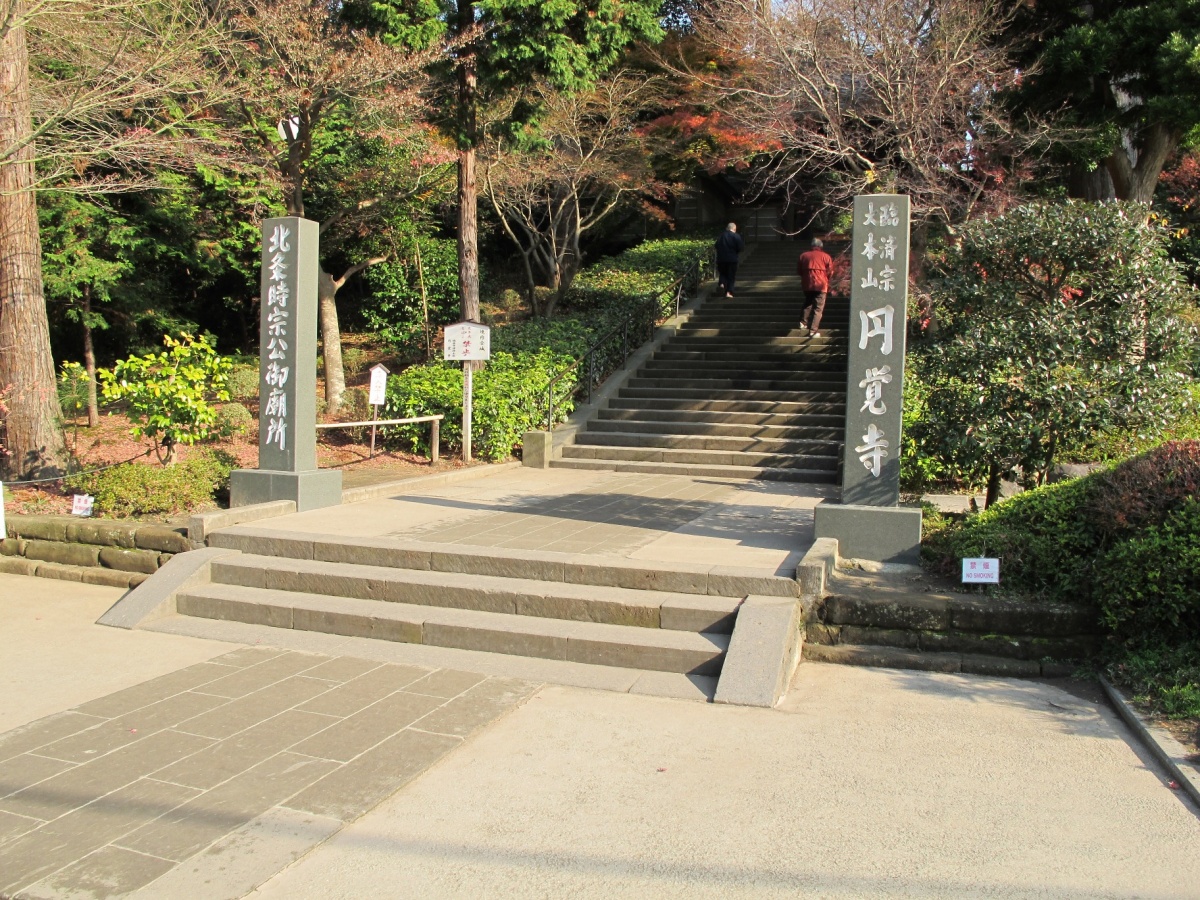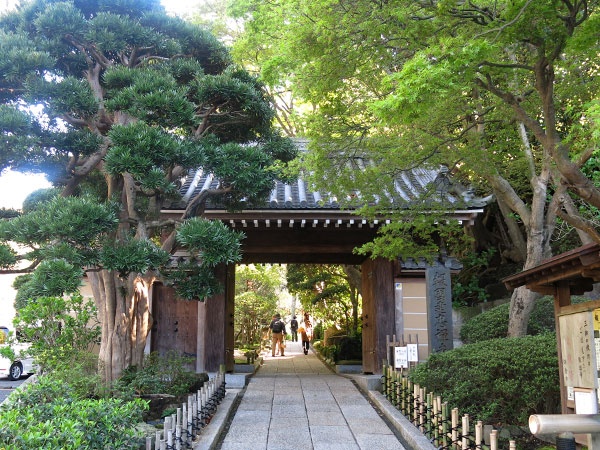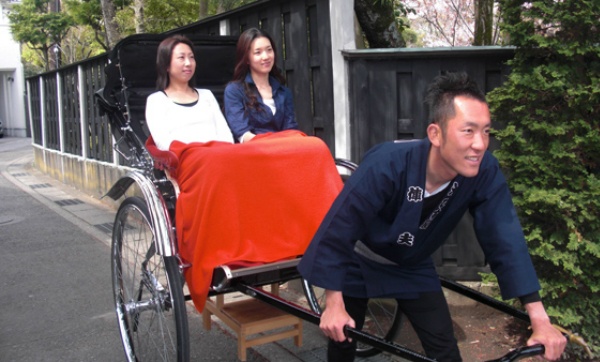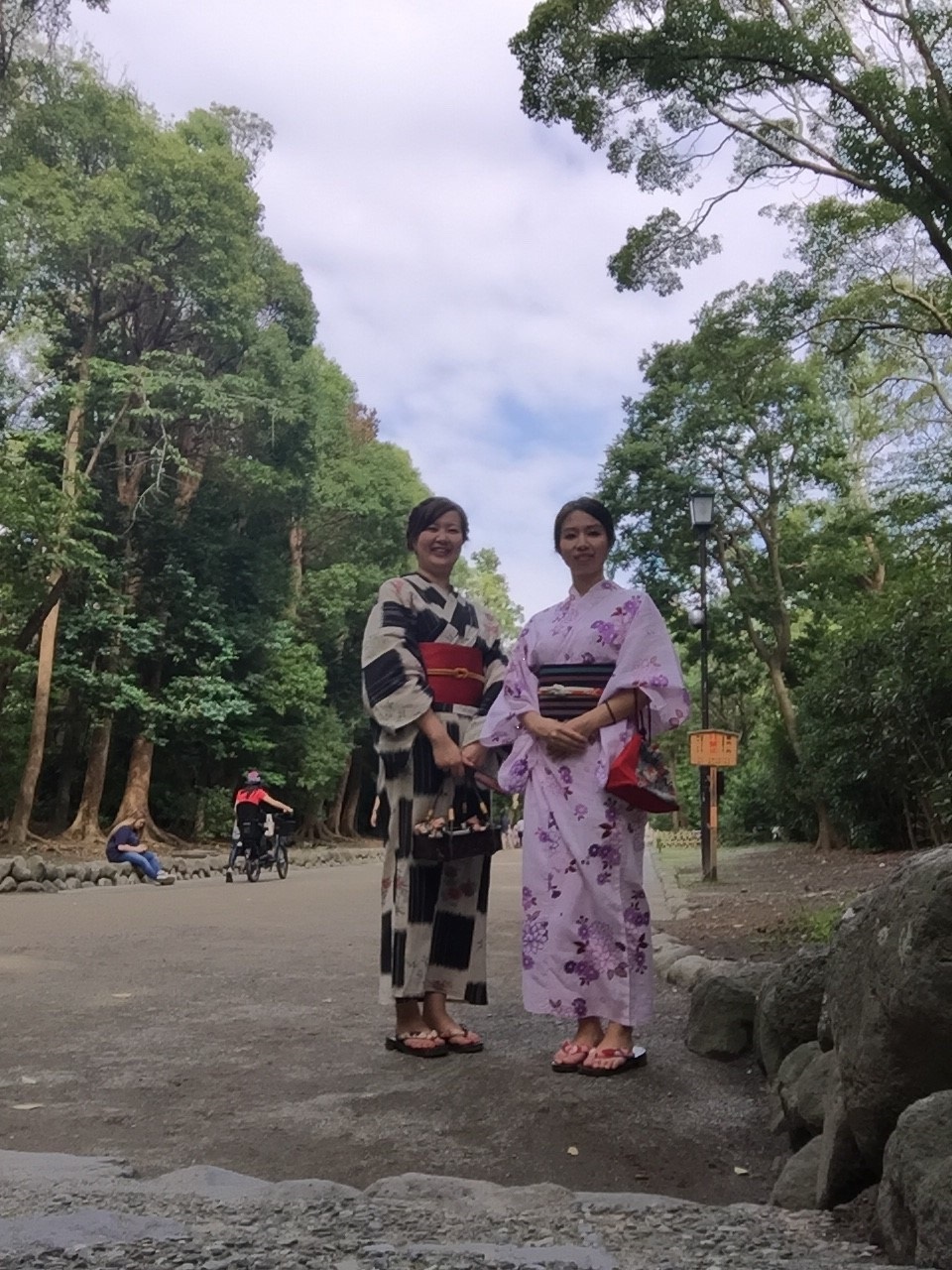The Coexistence of Old & New
Japan is unique because it respects traditional culture while letting new customs develop as well. Therefore, you'll find new technology and traditional values coexisting. This coexistence makes Japan special for visitors. Read on as we introduce Kamakura, a city famous for having a lot of traditional Japanese culture, with seven great examples.
By Sanpai Japan
http://sanpai-japan.com/2016/10/06/kamakura-the-coexistence-of-old-and-new/
Kamakura is a picturesque seaside city located about an hour’s train ride due south of central Tokyo. While the city sees the highest number of visitors during the summer months—with people all over the Kanto area coming here to enjoy the city’s three beaches—there's a constant stream of visitors throughout the year. These non-beach-bathers come to experience the history which Kamakura represents.
Kamakura was the seat of the Kamakura Shogunate from 1192 to 1333. This was the first time actual political power rested with a military family instead of with the emperor (who, at the time, was based out of Kyoto). While the Kamakura Shogunate itself lasted only a little over 100 years, real political power remained in the hands of the samurai class instead of the Imperial court until the Meiji Restoration of 1868.
Nestled amongst verdant hills, the geography of Kamakura forms a natural fortress, which is why Lord Yoritomo Minamoto (the first Kamakura shogun) established his government here. As such, Kamakura also boasted the first man-made harbor in Japan in order to facilitate the construction of all of the buildings required for Lord Yoritomo’s capital city, the seven narrow passes cut into the surrounding hills being designed for defense, not the transportation of goods.
Lord Yoritomo’s legacy can still be seen today. Leading from the beach to the Tsurugaoka Hachiman-gu Shrine (relocated to its present location by Lord Yoritomo) is a wide tree-lined boulevard. This boulevard was initially constructed by Lord Yoritomo to appeal to the gods for a safe delivery of his first child, and is still called Wakamiya-oji (young prince boulevard).
While there are some Shinto shrines here, the preeminent of which is Tsurugaoka Hachiman-gu Shrine, most of the religious institutions in Kamakura are Buddhist temples. As samurai dealt with death on a regular basis, the afterlife was very important to them. The samurai were particularly enamored of Zen Buddhism, with its associated discipline and meditation. From the grandeur of Tsurugaoka Hachiman-gu Shrine and the Great Buddha to the tranquility of the “Moss Temple,” Kamakura offers a spiritual oasis where visitors can revitalize their souls.
1. Kencho-ji Temple

http://sanpai-japan.com/2016/10/06/kamakura-the-coexistence-of-old-and-new/
The Kencho-ji Temple is the oldest Zen training monastery in Japan, and ranks first out of five temples that are called “Kamakura’s Five Mountain Zen Temples.” This temple was built in 1253, which was the fifth year of the Kencho era, thus the name became Kencho-ji. The Kencho-ji complex originally consisted of seven main buildings and 49 subtemples. It's hard to imagine how gigantic and incredible the property must have been back at this time. Unfortunately, most of these structures were destroyed by fires that occurred in the 14th and 15th centuries. Currently, the complex is made up of 10 main buildings and 10 subtemples.
The complex begins with two gates: the somon (central gate) and the sanmon (main gate). The somon was moved to the Kencho-ji Temple from the Hanju Sanmai-in Temple in Kyoto. The gate is very famous as it's used as a storage place for the Imperial family tablets. The sanmon was built by Bansetsu, who was the chief priest of Kencho-ji, in 1754. The project was funded by donations from people of the Kanto region of Japan. The gate is also nicknamed the “Tanuki Sanmon,” because of a legend that says a tanuki (racoon dog) proposed building the gate by transforming himself into a monk.
Like most temples, the Kencho-ji also has a bonsho (temple bell). This particular bonsho was cast in 1255 and bears an inscription on it by the founder, Daikaku Zenji. Due to this fact, the bell has since been designated by the government of Japan as being a National Treasure. The next buildings are the butsuden and the karamon. Both of these buildings were originally located at the Zojo-ji Temple in Tokyo. However, in 1647, they were both dedicated piece-by-piece to Kencho-ji.
The hatto (dharma hall) is the largest wooden Buddhist structure in Eastern Japan. The present building was rebuilt in 1814 and displays a painting on its ceiling called “Unryu-zu," which was made in honor of the 750th anniversary of Kencho-ji. This structure holds all of the major public ceremonies, however all events are held at the hojo (main hall). Just like the somon, the hojo was moved to Kencho-ji from the Hanju Sanmai-in Temple in Kyoto. The image of Shaka Nyorai (Buddha) is enshrined in this building and the building itself is often called the ryuo-den (dragon king hall).
Behind the hojo is the one of the most beautiful gardens I’ve seen in Japan. The garden was designed by Daikaku Zenji and it can be overlooked from a porch attached to the hojo. The garden also holds a pond called the “Sanpeki Ike.” Past the garden is the Hanso-bo Shrine. This exhibits the connection between temples and shrines, as the shrine is the guardian of Kencho-ji. While Hanso-bo Shrine was originally enshrined at the Hoko-ji Temple in Shizuoka, it was moved to Kencho-ji in 1890 per the request of Zen master Ozora Kando.
Finally, there's the monastery behind a bell tower, which is strictly closed to the public. This monastery is used for the intensive training of monks in Zen meditation. The monastery consists of the Zen-do (meditation hall), the kaisan-do (founder’s hall), hon-do (main building), and so on.
One reason to traveled to Kencho-ji Temple is to experience Rinzai Zazen. Zazen is Buddhist sitting meditation. When it comes to zazen, there are two different types: soto and rinzai. The Kencho-ji Temple was the perfect place to experience Rinzai Zazen for the first time because it was the first temple in Japan dedicated solely to the Rinzai Zen practice. The temple is also the head of the Kencho-ji branch of Rinzai Zen Buddhism, of which there are 400 affiliated temples!
2. Engaku-ji Temple
Engaku-ji, located just behind Kita Kamakura Station, is the second of the "Five Great Zen Temples of Kamakura." Perhaps because it's so close to a train station, this is a temple where you can use a Suica card to pay the admission fee.
Founded in 1282 by Tokimune Hojo to pray for the souls of the soldiers (of both sides) killed during the Second Mongol Invasion of Japan, Engaku-ji is, in one word, huge! It boasts the largest temple bell in the city and there are 18 other sub-temples within the grounds. Speaking of the grounds, Engaku-ji represents an excellent example of the harmony possible between humans and nature. The various buildings and gardens are laid out in such a manner as to complement nature instead of dominating it. The grounds extend higher and higher up into a mountain valley, giving the feeling of one’s spirit is ascending as well. At the furthest extent of the grounds is a garden belonging to a small sub-temple, and the steps leading to it are so narrow that two people can barely pass each other.
Of the many structures within Engaku-ji, the most celebrated is the relic hall, known as the shariden. It's the oldest wooden structure in Kamakura. Unfortunately, it's located in a compound where casual visitors are not allowed, so one can only catch a partial glimpse through a roofed gate. The shariden is so closely guarded.
See if you can find within Engaku-ji’s vast expanse the Three Happy Jizo, the guardian deity of children and travelers. Normally jizo statues display a somber, meditative face but these three are smiling. The Three Happy Jizo of Engaku-ji are reputed to bring about good relationships.
3. Jochi-ji Temple
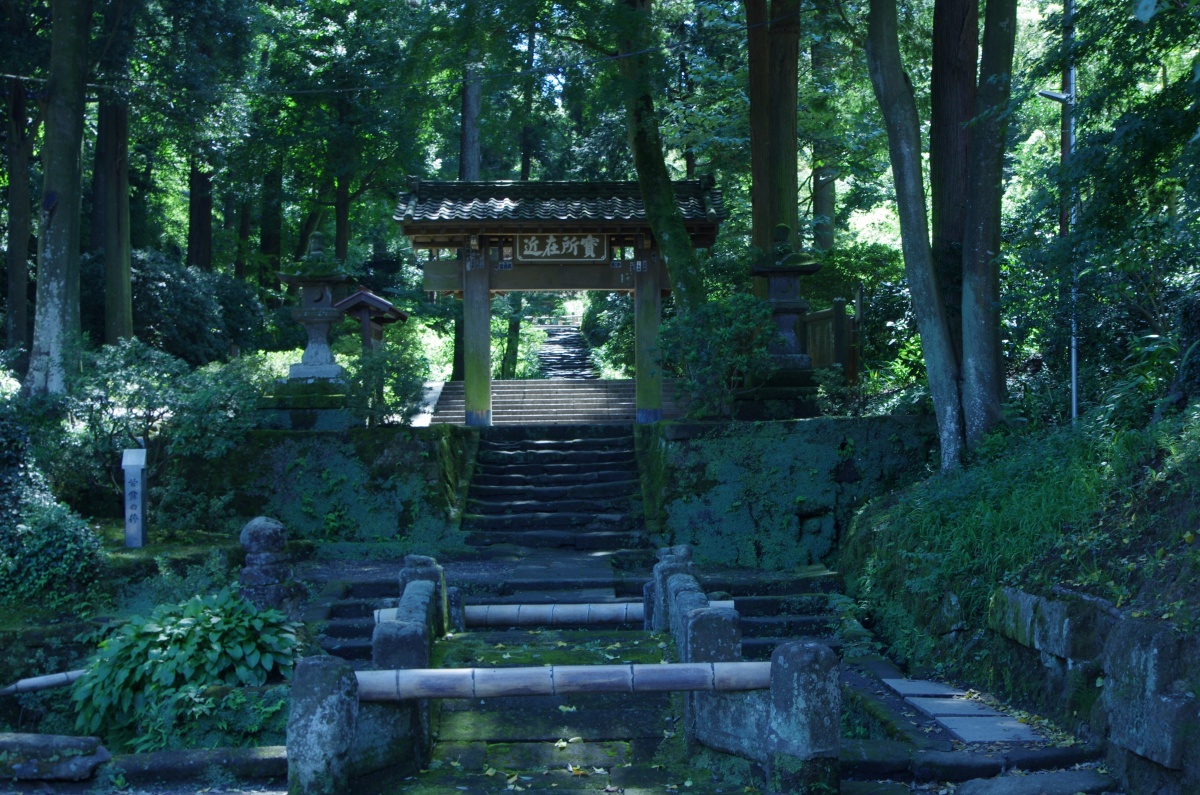
http://sanpai-japan.com/2016/10/06/kamakura-the-coexistence-of-old-and-new/
Jochi-ji is the fourth of the "Five Great Zen Temples of Kamakura." Situated in a picturesque ravine off the main Kamakura-Kita Kamakura road, the temple grounds are among a very lovely natural setting and well worth a visit. One can sense the air is a little different at Jochi-ji and the atmosphere is comforting and nurturing. Crossing a small stone bridge, then climbing up well worn and partially moss covered steps, the first glimpse one has of the temple is its Chinese-style belfry and gate. There's a beautiful garden behind the main hall, and a winding path takes you past the many tombs and caverns on the grounds. Following this path through a small cavern, one arrives at the Hotei-san statue. A jolly old man with a bald head and rounded belly, he's one of Japan’s Seven Gods of Good Fortune, and is the God of Happiness. Reputedly, one can garner good luck by rubbing his belly and so the statue’s belly is rather shiny.
The other notable feature of Jochi-ji is the Chief Priest, Eon Asahina. He's well known to Kamakura residents as a very pleasant and down-to earth Chief Priest. Often seen riding his scooter about town, wearing an easy to recognize black helmet with a broad gold racing stripe, Asahina is renowned for his culinary skills. He sometimes replicates food items seen in anime movies, and even teaches a curry-making class at Kamakura City Hall from time to time. He's also regularly featured on TV documentaries and travel shows featuring Kamakura. Perhaps it's only fitting a Chief Priest with his likable personality is in charge of a temple famed in part for the presence of Hotei-san.
4. Hokokuji temple
The Hokokuji Temple is a part of a group of Zen temples that belong to the Kencho-ji Temple of the Rinzai Sect. Tengan Eko established the Hokokuji Temple in 1334 (the first year of the Kenmu Era) to commemorate Ashikaga Ietoki, grandfather of Takauji, first of the Ashikaga shogun.
The principal image enshrined in the main hall of the temple is Shaka-Nyorai-zazo (sitting Buddha), which was crafted by a famous Buddhist sculptor, Takuma Hogen, and is designated as a protected cultural property by Kamakura. In the kasho-do (annex), a detailed statue of the originator Butsujo Zenji (his posthumous title) is also enshrined. This statue was crafted in 1347 and is also a protected cultural property designated by Kamakura. Another statue enshrined here is of Kasho Sonjazo, a disciple of Buddha. In the Kamakura Museum, many important treasures of this temple are preserved. Among them are Toki-shu, a wooden manuscript of Chinese poems written by the originator (the Kannon). The Japanese government designates the manuscript as an important cultural property as well.
The Hokokuji Temple is also famous for a beautiful bamboo garden. When you pass through the bamboo and walk along the stone path, a traditional tea ceremony building appears. The tea ceremony here takes place in a classic Japanese house with a unique atmosphere. You can participate in the tea ceremony for just ¥700, which is included the entrance fee.
The taste of the tea, the sun shining through the thick bamboo garden and the unique and peaceful atmosphere is incredibly relaxing and hard to find anywhere else. We suggest trying this additional experience when you visit the Hokokuji Temple.
5. The Tonbo (Dragonfly) Group
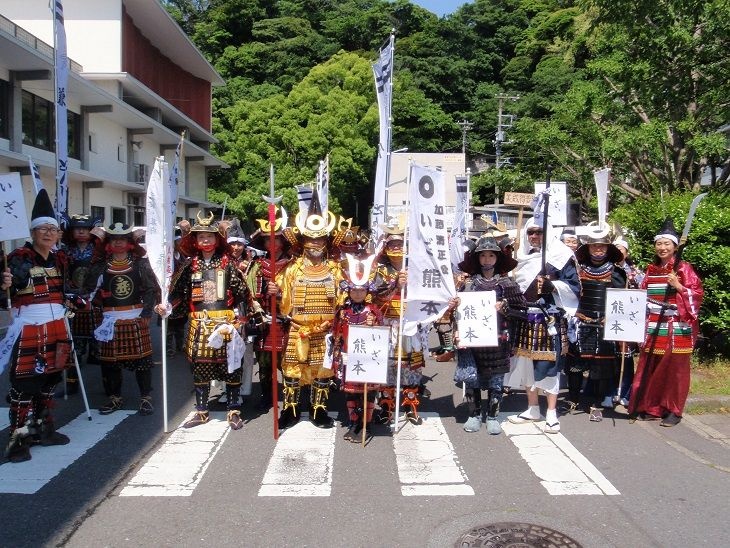
http://sanpai-japan.com/2016/10/06/kamakura-the-coexistence-of-old-and-new/
The Tonbo Group is a grassroots volunteer group that handcrafts replica samurai armor from heavy duty cardboard and enliven local Kamakura events by donning this armor and participating. Examples of such events include the Kamakura Parade, Yoshitsune Festival and even the Yokohama Parade. The group conducts charity drives for worthy causes, such as the Great Tohoku Earthquake disaster relief and Kumamoto Castle restoration efforts.
An armor-making class is held every year and each suit takes about 60-80 man-hours to complete, depending upon desired intricacy. The group “raised its battle standard” in March 2008, as Kamakura, despite being the former military capital of Japan, didn’t have any samurai participating in any of its modern-day events to publicize this historical fact. As of 2016, there are approximately 40 members of the group. Male or female, young or old, Kamakura resident or not, it doesn’t matter—all that's required to join is a passion for Japan’s samurai history.
The classes are open for viewing to the general public and the course is held from July through March, usually on the second and fourth Sundays. There's no course fee, just material costs. Should you desire to join, you don’t have to wait for the next class to start. Join midstream and you’ll be that much more prepared when the next year’s class starts. For more information, please go to the Tonbo Group’s website.
6. 'Jinrikisha'
Jinrikisha is a human-powered rickshaw used to transport people. It has been used from the start of the Meiji Period (1868-1912) up to the beginning of the Showa Period (1926-1989) as a means of transportation. Nowadays, it's used for tourists in sightseeing spots—Kamakura is one such place. Commonly, the jinrikisha driver (called shafu) guides and gives explanations to passengers while going around famous spots in city. Sightseeing in Kamakura is exceptional. Local people will recommend to you places off the beaten track and allow you to have unusual experiences.
A jinrikisha is as comfortable as your own room and faster than you think. You can feel a nice breeze when the shafu is running fast. Should you come to Kamakura and wish to experience something unusual, you should try a ride on a jinrikisha. Of course, you can also use a taxi, but why not try a jinrikisha, a truly Japanese experience giving you a lifetime of memories.
7. Kimono
Many people know about kimono, a traditional Japanese garment that's worn on special occasions and during festivals. Wearing a kimono is very polite and formal, though they used to be worn on a more daily basis. We recommend walking around Kamakura while wearing a Kimono. The atmosphere of the city of Kamakura is a great match for a traditional Kimono because the city has a lot of traditional Japanese places, such as temples and shrines. If you want to have a special experience, which you can only have in Japan, then this would be a great option and one you'd never forget.
One place where you can try wearing a kimono is located nearby Kamakura Station. Komachi Kimono Salon offers kimonos at a reasonable price, renting out their wares for just ¥3,000 (US$28.96), including the costume pieces you have to wear with the kimono, such as undergarments, socks and Japanese sandals. Additionally, you can leave your luggage there. If you were to pay to leave your luggage elsewhere, it would cost about ¥500~1,000. However, you can experience exploring Kamakura while wearing a kimono and store your luggage at the same time.



